Frederic V. Hartemann0849323789, 9780849323782
Table of contents :
HIGH-FIELD ELECTRODYNAMICS……Page 3
Foreword……Page 5
Preface……Page 7
Contents……Page 10
1.1 Introduction……Page 16
Contents……Page 0
Part I: Foundations……Page 15
1.2 The Relativistic Intensity Regime……Page 17
1.4 Maxwell’s Equations……Page 18
1.5 Fields and Inductions, the Minkowski Formalism……Page 20
1.6 Potentials, Gauge Condition, and Wave Equation……Page 21
1.7 The Coulomb Potential and Plane Waves……Page 23
1.8 Notes to Chapter 1……Page 30
1.9 References for Chapter 1……Page 37
2.1 Introduction……Page 38
2.2 The Special Lorentz Transform……Page 41
2.3 Four-Vectors……Page 43
2.4 Addition of Velocities……Page 48
2.5 Four-Acceleration and Hyperbolic Motion……Page 53
2.6 Variation of the Mass with Velocity……Page 57
2.7 The Energy-Momentum Four-Vector……Page 59
2.8 Transformation of Forces……Page 61
2.9 Transformation of Energy……Page 68
2.10 Transformation of Angular Momentum……Page 69
2.11 Transformation of Length, Surface, Volume, and Density……Page 72
2.12 Relativistic Plasma Frequency……Page 76
2.13 The General Lorentz Transform……Page 84
2.14 Thomas Precession……Page 93
2.15 Schwinger’s Approach……Page 98
2.16 References for Chapter 2……Page 101
3.1 Four-Vectors and Tensors……Page 102
3.2 The Electromagnetic Field Tensor……Page 106
3.3 Covariant Form of Maxwell–Lorentz Equations……Page 110
3.4 A Few Invariants, Four-Vectors, and Tensors Commonly Used……Page 117
3.5 Transformation of the Fields……Page 120
3.6 Electron and QED Units……Page 123
3.7 Covariant Electromagnetic Lagrangian and Hamiltonian……Page 126
3.8 Field Four-Momentum and Maxwell Stress Tensor……Page 135
3.9 Metric and Christoffel Symbols……Page 150
3.10 Solid in Rotation, Sagnac Effect……Page 158
3.11 Dual Tensors and Spinors, Dirac Equation……Page 165
3.12 Notes to Chapter 3……Page 178
3.13 References for Chapter 3……Page 186
4.1 Introduction……Page 187
4.2 Lorentz Gauge……Page 193
4.3 Coulomb Gauge and Instantaneous Scalar Potential……Page 195
4.4 Other Gauge Conditions……Page 200
4.5 Charge Conservation……Page 203
4.6 Noether’s Theorem……Page 205
4.7 Yang-Mills and Non-Abelian Gauge Fields……Page 210
4.8 Weyl’s Theory……Page 215
4.9 Kaluza–Klein Five-Dimensional Space–Time……Page 218
4.10 Charged Black Holes, Quantum Gravity, and Inflation……Page 221
4.11 Superstrings and Dimensionality……Page 232
4.12 The Bohm–Aharanov Effect……Page 244
4.13 References for Chapter 4……Page 248
Part II: Electromagnetic Waves……Page 249
5.1 Introduction……Page 250
5.2 The Dirac Delta-Function……Page 251
5.3 Fourier, Laplace, and Hankel Transforms……Page 266
5.4.1 Green Function for PoissonÌs Equation, Coulomb Potential……Page 271
5.4.2 Green Function for the dÌAlembertian, Photon Propagator……Page 276
5.5 Liénard–Wiechert Potentials……Page 285
5.6.1 Cylindrical Vacuum Eigenmodes……Page 290
5.6.2 Cylindrical Waveguide Eigenmodes……Page 302
5.6.3 Orthogonality of the Cylindrical Waveguide Eigenmodes……Page 307
5.6.4 Eigenmode Decomposition of the Four- Current……Page 310
5.6.5 Gauge Condition and Continuity Equation……Page 314
5.6.6 Green Function in a Cylindrical Waveguide……Page 316
5.6.7 Fast- Wave Excitation in a Cylindrical Waveguide……Page 318
5.6.8 Slow-Wave Excitation in a Corrugated Waveguide……Page 322
5.7 Point Charge in Rectilinear Motion in Vacuum……Page 332
5.7.1 Coulomb Field and Lorentz Transform……Page 333
5.7.2 Bessel Vacuum Eigenmode Excitation……Page 334
5.8 Multipoles, Spherical Harmonics, and the Hydrogen Atom……Page 339
5.9 Group Velocity Dispersion, Higher-Order Effects, and Solitons……Page 351
5.10 References for Chapter 5……Page 377
6.1 Introduction……Page 378
6.2 Quantization of the Free Electromagnetic Field……Page 380
6.3 Creation and Annihilation Operators……Page 387
6.4 Energy and Number Spectra……Page 389
6.5 Momentum of the Quantized Field……Page 393
6.6 Angular Momentum of the Quantized Field……Page 396
6.7 Classical Spin of the Electromagnetic Field……Page 401
6.8 Photon Spin……Page 404
6.9 Vacuum Fluctuations……Page 405
6.10 The Einstein Ò Podolsky Ò Rosen Paradox……Page 407
6.11 Squeezed States……Page 411
6.12 Casimir Effect……Page 413
6.13 Reflection of Plane Waves in Rindler Space……Page 414
6.13.1 Background……Page 415
6.13.2 Derivation of the Reflected Wave Using the Rindler Transform……Page 416
6.13.3 Derivation of the Reflected Wave Usingthe Lorentz Transform……Page 420
6.13.4 Mathematical Appendix……Page 423
6.14 References for Chapter 6……Page 424
7.1 Introduction……Page 425
7.2 Classical Theory of Cerenkov Radiation……Page 426
7.3 Fields and Inductions, Polarization and Nonlinear Susceptibilities……Page 437
7.4 Transform of Linear Refractive Index: Minkowski Formulation……Page 442
7.5 Anomalous Refractive Index and Cerenkov Effect……Page 445
7.6 Linear Isotropic Medium: Induced-Source Formalism……Page 448
7.7 Covariant Treatment of Nonlinear Effects……Page 452
7.8 References for Chapter 7……Page 453
8.1 Introduction……Page 454
8.2 Exact Solutions to the Three-Dimensional Wave Equation in Vacuum……Page 459
8.3 The Paraxial Propagator……Page 462
8.4 Bessel Functions and Hankel’s Integral Theorem……Page 466
8.5.1 Canonical Invariants: Phase and Light-Cone Variable……Page 471
8.5.2 Fluid Invariants……Page 475
8.6 Ponderomotive Scattering……Page 477
8.7 Electron Dynamics in a Coherent Dipole Field……Page 482
8.8 Chirped-Pulse Inverse FEL……Page 490
8.9 Free-Wave Acceleration by Stimulated Absorption of Radiation……Page 500
8.10 Plasma-Based Laser Acceleration Processes……Page 506
8.11 References for Chapter 8……Page 510
Part III: Relativistic Electrons and Radiation……Page 511
9.1 Introduction……Page 512
9.2 Coherent Synchrotron Radiation in Free-Space……Page 516
9.3 Coherent Synchrotron Radiation in a Waveguide……Page 528
9.4 Instantaneous Power Flow in the Waveguide……Page 539
9.5 Time-Dependent Chirped Wavepacket……Page 540
9.6 Propagation in a Negative GVD Structure……Page 548
9.7 Relativistic Eulerian Fluid Perturbation Theory……Page 550
9.8 References for Chapter 9……Page 567
10.1 Introduction……Page 568
10.2 Classical Theory of Compton Scattering……Page 569
10.2.1 The HLF Radiation Theorem……Page 570
10.2.2 Covariant Linearization……Page 571
10.2.3 Nonlinear Plane Wave Dynamics……Page 572
10.2.4 Radiation……Page 575
10.3.1 Classical Compton Scattering Differential Cross-Section……Page 576
10.3.2 Energy Spread……Page 579
10.3.3 Emittance……Page 581
10.4 Three-Dimensional Theory of Compton Scattering……Page 583
10.4.1 The Cold Three-Dimensional Spectral Density……Page 585
10.4.2 Three-Dimensional Effects……Page 587
10.4.3 Three-Dimensional Compton Scattering Code……Page 589
10.5 Stochastic Electron Gas Theory of Coherence……Page 593
10.5.1 Comparison with a Fluid Model……Page 597
10.6 Harmonics and Nonlinear Radiation Pressure……Page 601
10.7 Radiative Corrections: Overview……Page 602
10.8 Symmetrized Electrodynamics: Introduction……Page 606
10.9 Symmetrized Electrodynamics: Complex Notation……Page 607
10.10 Symmetrized Dirac–Lorentz Equation……Page 609
10.11 Conceptual Difficulties: Electromagnetic Mass Renormalization, Runaways, Acausal Effects……Page 613
10.12 Schott Term……Page 615
10.13 Maxwell Stress Tensor……Page 621
10.14 Hamiltonian Formalism……Page 623
10.15 Symmetrized Electrodynamics in the Complex Charge Plane and the Running Fine Structure Constant……Page 625
10.16 Notes to Chapter 10……Page 626
10.17 References for Chapter 10……Page 633
Bibliography……Page 634
References……Page 641
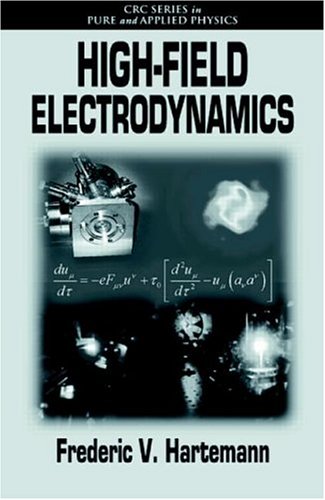
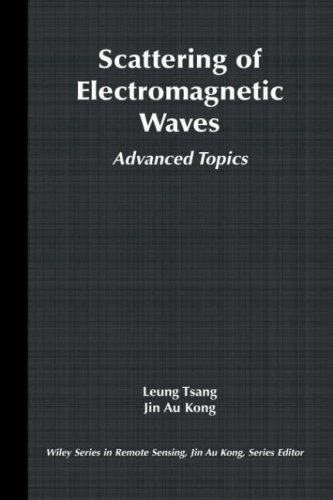


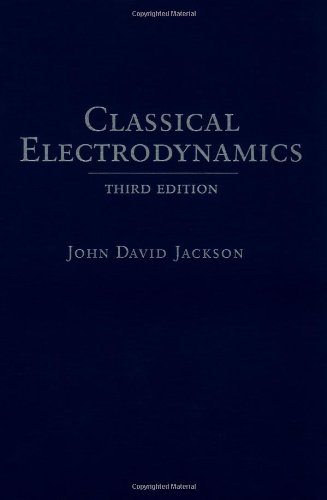
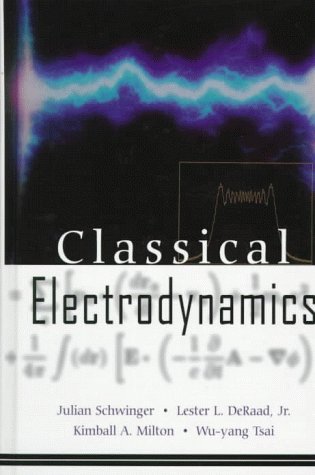
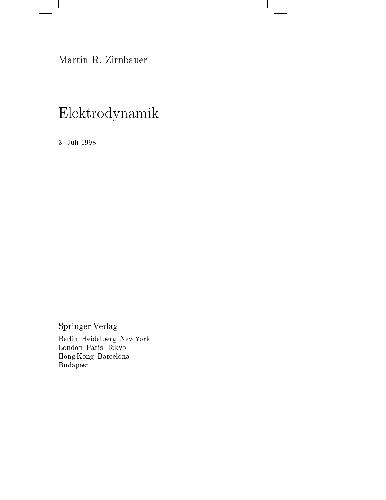
Reviews
There are no reviews yet.